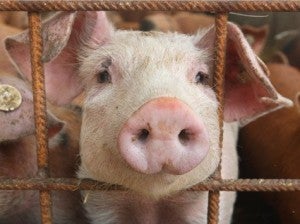Holly Pearen, EDF’s Attorney for the Natural Gas Campaign, contributed to this blog post.
The federal government notified 36 states last week that it plans to temporarily stop monthly mineral revenue payments as a part of the mandatory sequestration budget cuts. These cuts will hit western states especially hard with an estimated $26 million cut coming to New Mexico over the next six months, $8.7 million to Utah, $8.4 in Colorado and $5.5 in California, while North Dakota and Montana will see $3.2 and $2.5 million in cuts, respectively, according to data from the U.S. Department of Interior’s Office of Natural Resources Revenue.
However, no state will be hit as hard as mineral resource and federal lands-rich Wyoming, which has been notified to prepare itself to lose $53 million in federal mineral revenue payments through July.
The money is the state’s share of royalties paid by producers who operate on federal leases in Wyoming. Not surprisingly, Wyoming officials are very unhappy with the federal plan, both its details and the way it was announced to the states via letter with little forewarning. As Wyoming Governor Matt Mead said in a statement: “As far as communications go, this method of passing along significant information that greatly impacts Wyoming gets a grade of F minus or worse. It is not acceptable.”
While Governor Mead has vowed to fight the plan and is working with the Wyoming Attorney General, Wyoming’s congressional delegation and neighboring states to come up with a strategy to oppose the cuts, we would like to offer a suggestion. Perhaps Interior should make up the shortfall owed to the states by charging royalties on vented and flared natural gas?
Under the current regulatory framework, Interior could be losing millions annually by permitting federal lessees to discharge routine amounts of gas during the course of production without notifying federal regulators. This gas that is not captured and sold but rather released to the atmosphere or burned off at the production site, , is not subject to federal royalty payments. In other words, vented and flared gas is “free” and federal taxpayers and state royalty recipients do not receive any monetary benefit from these wasted resources.
Improper and excessive venting and flaring practices harm local residents by increasing smog pollution (a major cause of asthma) and exacerbating air quality concerns. The very sorts of air quality problems currently plaguing areas like Wyoming’s Upper Green River Basin and the Front Range in Colorado.
Charging royalties on this gas would therefore make sense on multiple levels. It would help states make their budget ends meet while also providing an economic incentive toward less gas waste and cleaner air.
This sort of commonsense solution is exactly what the U.S. Government Accountability Office has recommended several times, finding that at least $58 million could be recovered if federal royalty rates were applied to this wasted gas. This estimate is likely low since no solid data exists for what volumes of gas are currently being vented and flared on federal lands. There could potentially be millions more available to states under this policy, translating immediately into state-administered investments in schools, roads and other needed infrastructure.
In fact, the Wyoming State Land Board already took similar and significant measures last year when it implemented its’ own natural gas flaring policy, in an attempt to capture revenues otherwise foregone to wasteful venting and flaring. The Land Board’s policy isn’t perfect, but it is a step in the right direction and could form the basis for stronger guidelines at the federal level.
We would encourage leaders across the West and in Washington, D.C. to take a look at Wyoming’s policies concerning charging for vented and flared gas on state lands. Strengthening the DOI’s and U.S. Bureau of Land Management’s outdated venting and flaring policies along the same lines could be a huge step toward smart regulation that protects air quality and budgets simultaneously.
While these are not new ideas, they may be ideas whose time has come.










